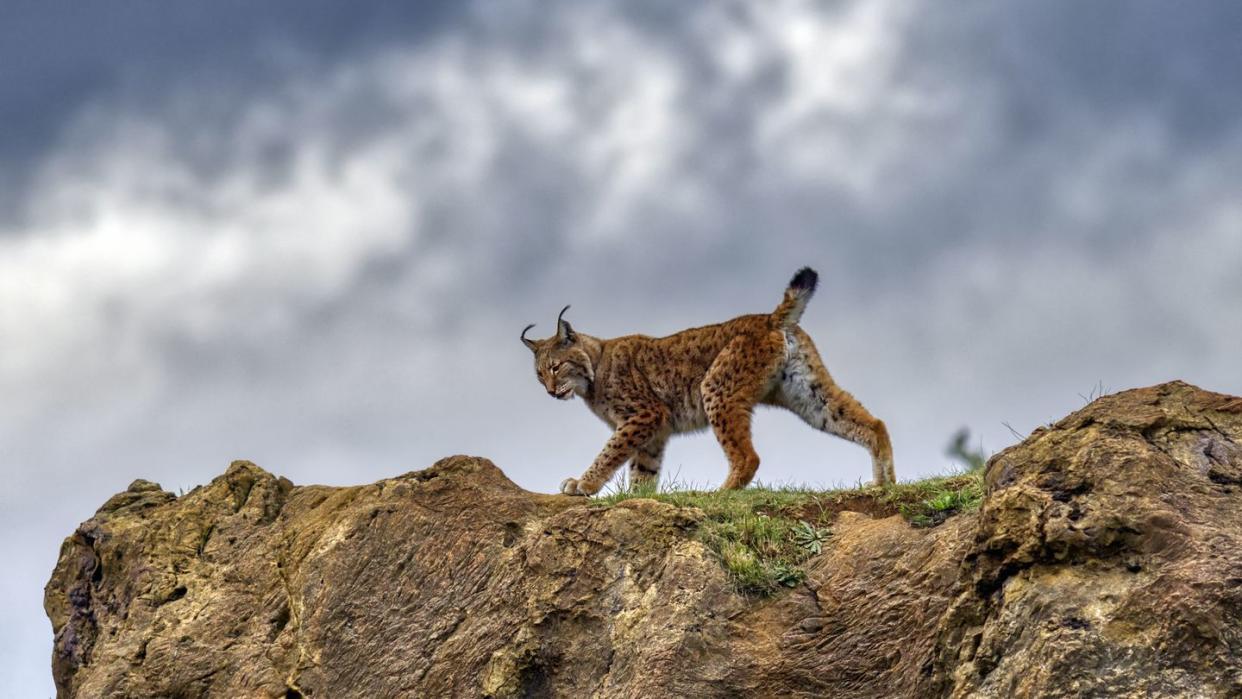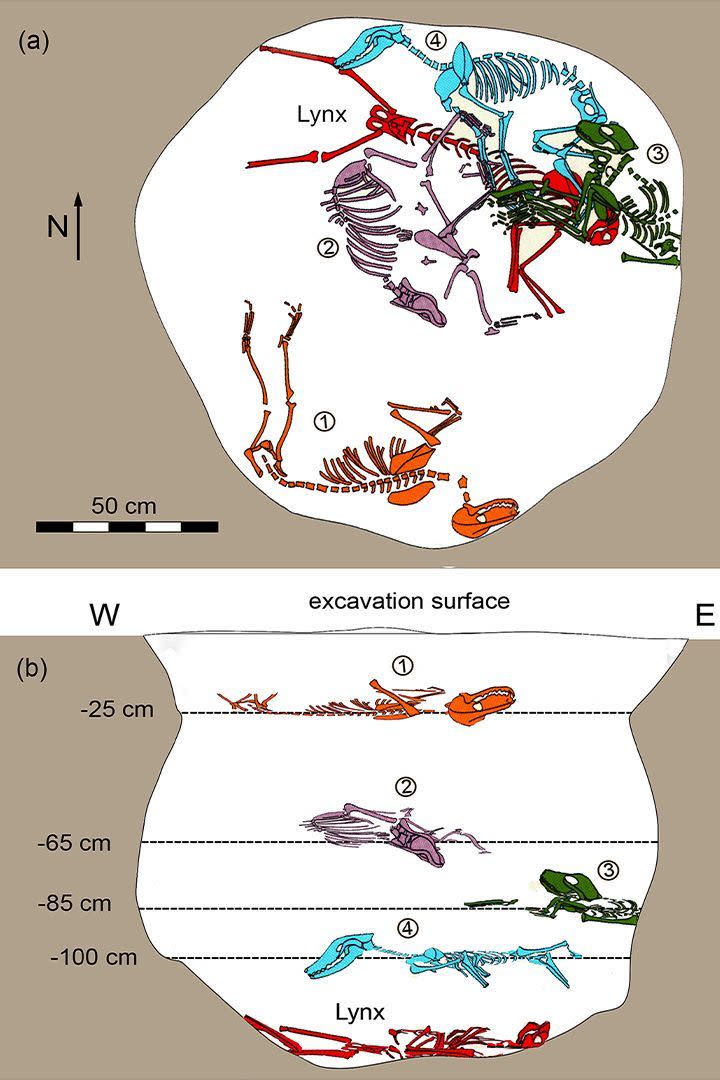Archeologists Unearthed a Lynx Skeleton Layered With Dogs. They’re Baffled.

Finding claws or pelts of the Eurasian lynx in European archeological sites isn’t uncommon, but finding an entire skeleton...that’s something else.
Archeologists working at a site in Hungary discovered a perplexing fifth or sixth century burial of a lynx with four dogs stacked on top of it. Theories suggest it could be the result of a simple hunting accident, or a more elaborate ritual.
It’s unlikely that archeologists will ever know for sure, as information about this post-Rome culture is lacking.
The Eurasian lynx (Lynx lynx) is arguably the most majestic cat species found throughout Europe. Its domain on the continent is wide, but evidence of its existence within human culture is usually found in the form of claws and pelts—likely tokens and garments possessed by ancient peoples.
However, a new archeological study details a truly strange burial—dating around the fifth or sixth century CE—that includes four dogs and lynx. In addition to being odd, it’s the only complete archeological lynx skeleton ever found in Europe.
But while finding a complete lynx is a rarity, the arrangement of the burial is what has really raised a few eyebrows. The lynx, along with four canines, are a sorted into a kind of post-mortem Jenga—the large feline was buried on the bottom and the dogs were layered on top, with each carcass separated by 8 to 16 inches of dirt. One explanation could be that the dogs were killed while hunting the lynx, but other evidence points to different, more deliberate theories. The details of the find were published last month in the journal in International Journal of Osteoarchaeology.
“Although the physical reconstruction of the lynx was of help in appraising this special pit, the actual nature of the deposit remains in question,” the paper reads. “Possible interpretations range from the mundane discard of carcasses to the poorly understood ritual burial of carnivores, beginning with the lynx.”
These animal carcasses were found at the site Zamárdi-Kútvölgyi-dűlő in west-central Hungary. Dating to around the collapse of the Roman Empire, this pit was constructed during what was likely a chaotic time for western Europe. This particular area was known as Pannonia when under Roman rule, and archeologists expect that at the time of the burial, the small group of people that lived there likely obtained food from crops and domesticated animals rather than hunting game—making the idea of a hunting accident seem unlikely.

However, the theory that the burial was some kind of elaborate ceremony central to an early Middle Ages lynx cult also has some problems—chiefly, that the carcasses don’t appear to be placed with any particular reverence. Despite this contrary evidence, zooarchaeologist Victoria Moses told Live Science that while it’s hard to be certain, evidence pointing to the “likelihood of a ritualistic burial is high.” Sadly, it’s likely that we’ll never know for sure.
“Given its dynamic multicultural setting, to date, the unambiguous interpretation…remains impossible,” the paper reads. “In the absence of additional material, written or ethnographic evidence, spurious ritual interpretations shall not be perpetuated in spite of the indubitably curious nature of the Zamárdi deposit.”
The Eurasian lynx is the largest of the four species found in the genus, which also includes the Iberian lynx, Canadian lynx, and North America’s well-known bobcat. While it’s been a dominant cat species on the continent for thousands of years, certain populations of the Eurasian lynx are now critically endangered. The World Wildlife Fund attributes its decline to limited resources, habitat loss, hunting, and collisions with motor vehicles. While France attempted to reintroduce the lynx in the 1970s, scientists estimate they will disappear from the country again in 30 years if steps are not taken to conserve the population.
And those steps should be taken, if for no other reason than that the archeological evidence shows these amazing cats have been a part of the human story for centuries.
You Might Also Like
